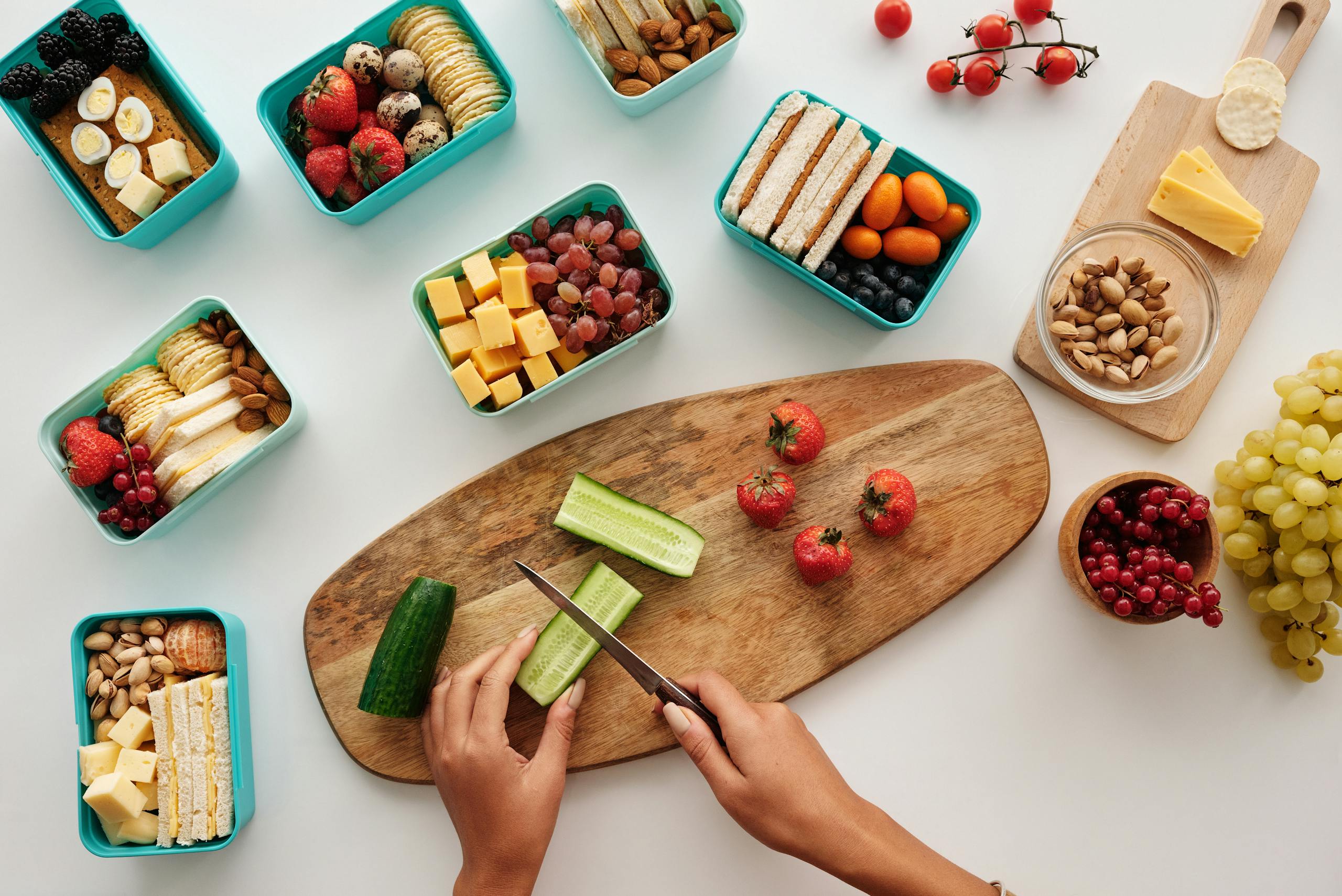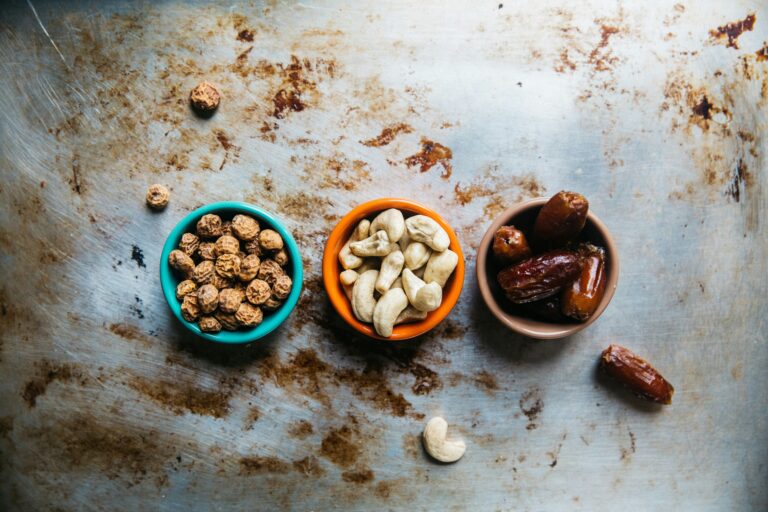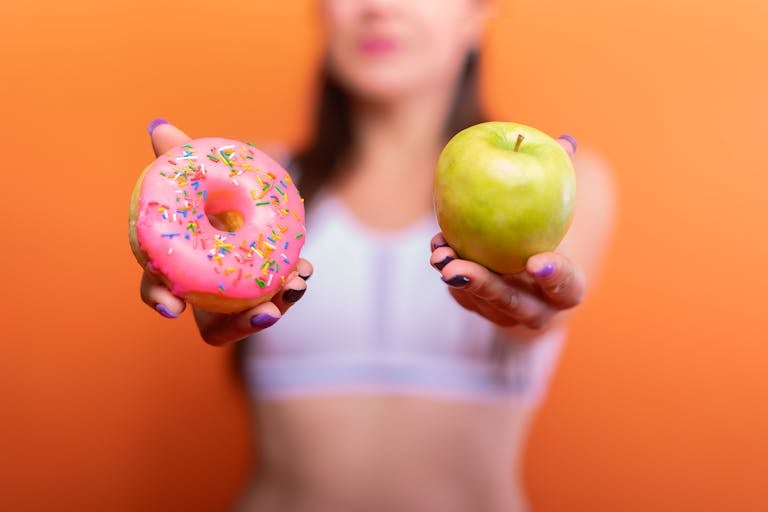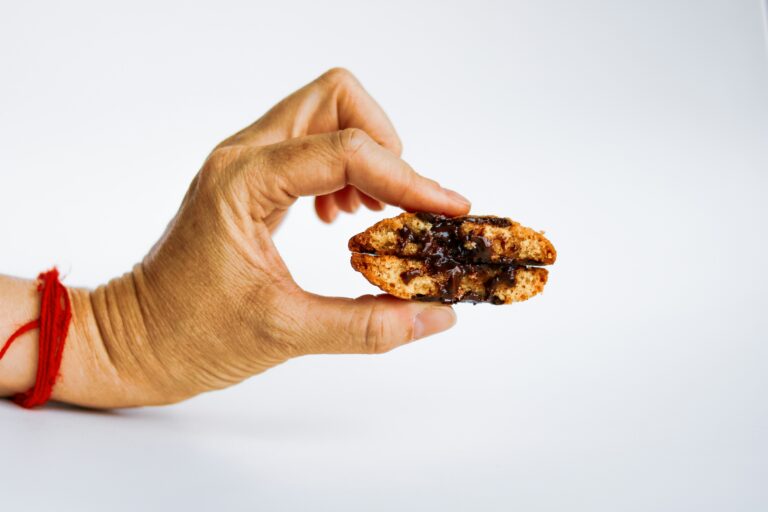Finding the right foods for weight loss can be overwhelming, especially if you want to lose weight, manage excess weight, or are overweight. With so much diet advice and conflicting information everywhere you look, it’s easy to get stuck in analysis paralysis instead of taking action.
The truth is, successful weight loss doesn’t require complicated meal plans or expensive superfoods. A structured diet plan can give you a clear approach to losing weight. Research consistently shows that focusing on nutrient-dense dense whole foods is the most effective way for sustainable results.
This post will simplify your nutrition journey by highlighting 7 foods that work with your body’s natural processes. Developing healthier habits and improving habits are key to a successful weight loss nutrition plan. These foods will keep you fuller for longer, support your metabolism, and give you steady energy throughout the day. Each one can fit into your current meal routine, making your weight loss plan practical and enjoyable.
We’ll explore what makes each food so effective, backed by science, and provide simple meal ideas you can try this week. You’ll also discover the health benefits and lifestyle changes that come from following this plan.
1. Leafy Greens: Your Low-Calorie Powerhouse
Spinach, kale, arugula, and other leafy greens are nutritional powerhouses that deliver maximum nutrients with minimum calories. These veggies are naturally low-fat and pack vitamins A, C, and K, folate, and iron into every serving.
The high fiber content is what makes leafy greens so effective for weight management. A study published in the Journal of the Academy of Nutrition and Dietetics found that people who consumed more high-fiber vegetables had better weight control over time. The fiber creates bulk in your stomach, triggering satiety signals that help you feel full without adding calories. Adding more veggies to your diet gives you health benefits like improved digestion, better weight control, and reduced risk factors for chronic diseases.
Simple meal idea: Start your day with a spinach and mushroom omelet or add a big handful of kale to your lunchtime smoothie. The mild flavor blends well with fruits while boosting your nutrient intake.
2. Lean Proteins: The Metabolism Boosters
Chicken breast, fish, tofu, and other lean protein sources are the building blocks of any good nutrition plan. These foods are low in fat and calories and provide the complete amino acid profile your body needs. To lose weigh,t you need to consume fewer calories than you burn. Lean proteins can help you feel full, making it easier to be in a caloric deficit. Protein also supports muscle health, which is especially important for adults who exercise regularly.
Protein has a unique advantage called the thermic effect of food (TEF). Your body actually burns more calories digesting protein than carbohydrates or fats. Plus, adequate protein intake helps preserve muscle mass during weight los,s which keeps your metabolism running efficiently.
Simple meal idea: For dinner, pair a grilled chicken breast with roasted vegetables. Plant-based eaters or those who prefer a vegetarian option can try a tofu or lentil stir-fry with broccoli and bell peppers for a satisfying protein protein-rich meal.
3. Legumes: The Fiber and Protein Powerhouses
Beans, lentils, and chickpeas are a powerful combination that’s hard to beat. These versatile foods provide both protein and fiber in significant amounts, a one-two punch for appetite control.
The dual benefit of protein and fiber regulates blood sugar levels and extends the time you feel full after eating. This is especially important for people with diabetes as legumes can help manage blood sugar and lower the risk of diabetes complications. This combination naturally reduces your overall calorie intake without leaving you feeling deprived or hungry between meals.
Simple meal idea: Make a hearty lentil soup for a comforting meal or add chickpeas to your salad for an extra boost of protein and fiber that turns a simple side into a complete meal.
4. Whole Grains: Sustained Energy Sources
Oats, quinoa, brown rice, and other whole grains contain all parts of the grain kernel, providing complex carbohydrates that your body processes differently from refined grains.
These complex carbohydrates provide steady energy without causing the blood sugar spikes and crashes that come with processed foods. The fiber content aids digestion and helps you feel full, avoiding the energy dips that often lead to unhealthy snacking. Whole grains can also lower the risk of heart disease, making them a valuable part of a healthy diet.
Simple meal idea: Enjoy a warm bowl of oatmeal topped with berries for breakfast or use quinoa as a base for a nutrient-dense grain bowl at lunch. It’s versatile and easy to incorporate into various cuisines and cooking styles.
5. Berries: Nature’s Sweet Solution
Strawberries, blueberries, raspberries, and blackberries are among the lowest sugar fruits while being packed with fiber and antioxidants.
These natural sweets satisfy your dessert cravings without the calorie load of processed treats. The fiber content slows down sugar absorption, preventing the blood sugar rollercoaster that can trigger more cravings later in the day. Plus, the antioxidants in berries may help reduce the risk of cancer by protecting cells from damage.
Simple meal idea: Mix a cup of assorted berries into Greek yogurt for a protein-rich snack or blend them into a smoothie with leafy greens for a nutrient-dense breakfast on the go.
6. Greek Yogurt: The Protein-Rich Probiotic
Greek yogurt stands out from regular yogurt due to its straining process, which removes excess whey and concentrates the protein content. Greek yogurt is also available in low-fat options, making it suitable for calorie-conscious diets. This results in a creamy, satisfying food that supports both digestive health and weight management.
The high protein content keeps you full while supporting muscle health during weight loss. The probiotics contribute to a healthy gut microbiome, which emerging research suggests plays an important role in weight regulation and overall metabolism.
Simple meal idea: Use plain Greek yogurt as a base for a creamy salad dressing by mixing in herbs and lemon juice, or enjoy it with a sprinkle of nuts and a drizzle of honey for a satisfying snack.
7. Nuts and Seeds: Small Portions, Big Impact
Almonds, walnuts, chia seeds, and flaxseeds are nutrient-dense foods that provide healthy fats, protein, and fiber in compact packages.
Despite being calorie-dense, research shows that a small portion of nuts can significantly increase satiety and help prevent overeating at subsequent meals. The healthy fats are essential for nutrient absorption and hormone production, both crucial for a healthy metabolism.
Simple meal idea: Keep a small handful of almonds ready for midday hunger pangs or add a tablespoon of chia seeds to your morning oatmeal for extra fiber and omega-3 fatty acids. For a satisfying and healthy dessert, pair a small portion of nuts with a piece of dark chocolate.
How to Choose Healthy Choices That Stick
Making healthy food choices doesn’t have to be overwhelming. By focusing on small, sustainable changes, you can create habits that support your overall well-being without the stress of restrictive diets. Incorporating healthy habits into your daily routine is key to long-term success and building a sustainable lifestyle. Here are some practical tips to help you incorporate nutrient-dense foods into your routine:
- Start small: Begin by gradually adding more fruits, vegetables, and whole foods to your meals instead of cutting everything out at once. Small, manageable steps are easier to maintain and less overwhelming.
- Focus on balance: Make nutrient-dense foods a priority over processed options, but remember it’s not about eliminating entire food groups. A balanced diet includes a variety of foods to meet your body’s needs.
- Portion control matters: Even healthy foods can contribute to weight gain if consumed in excess. Pay attention to serving sizes to ensure you’re staying within your nutritional goals without overindulgence.
- Practice mindful eating: Tune in to your body’s hunger and fullness cues. Eat slowly and avoid turning to food as a way to deal with boredom, stress, or emotions. This helps build a healthier relationship with food.
- Increase physical activity: Find ways to add more physical activity to your daily routine, such as walking, cycling, or taking the stairs. Regular movement is part of a healthy lifestyle and supports weight management and overall health.
- Stay consistent: Small, sustainable changes made consistently over time are more effective than extreme measures. Focus on building habits that you can stick with for the long term.
- Prioritize sleep: Quality sleep is essential for your overall health. It supports brain function, energy levels, and physical recovery, so aim for 7-9 hours of restful sleep each night.
The Foundation: Proper Hydration
Water supports every aspect of your weight loss journey, yet it’s often overlooked. Adequate hydration aids digestion, maintains energy levels, and helps your body process the nutrients from these power-packed foods.
Drinking enough water also helps you distinguish between true hunger and thirst, which can prevent unnecessary snacking. Consider replacing sugary drinks with water or herbal teas to reduce calorie intake while staying properly hydrated.
Carry a reusable water bottle throughout the day to make consistent hydration effortless. This simple tool removes barriers and helps you build the habit naturally.
Start Healthy Eating Today
These 7 foods—leafy greens, lean proteins, legumes, whole grains, berries, Greek yogurt, and nuts and seeds—are the foundation of a weight loss nutrition plan, making it easier for adults to lose weight. Each one has its own benefits that work together to support your metabolism, appetite, and energy.
The beauty of this approach is its simplicity. You don’t need complicated rules or expensive ingredients. These whole, nutrient-dense foods work with your body’s natural processes to support healthy weight loss.
Start by adding one or two of these foods to your daily meals this week. See how they affect your energy and hunger. Building sustainable habits takes time, but each positive change gets you closer to your wellness goals and a healthier life.
Ready to build your perfect nutrition plan? Check out our blog for more healthy tips to help you achieve your wellness goals.
Medical Disclaimer:
This content is for informational purposes only and is not intended as medical advice, diagnosis, or treatment. Always consult with a qualified healthcare professional before making any changes to your diet, exercise, or health routine. Never disregard professional medical advice or delay seeking it because of something you have read on this site.







